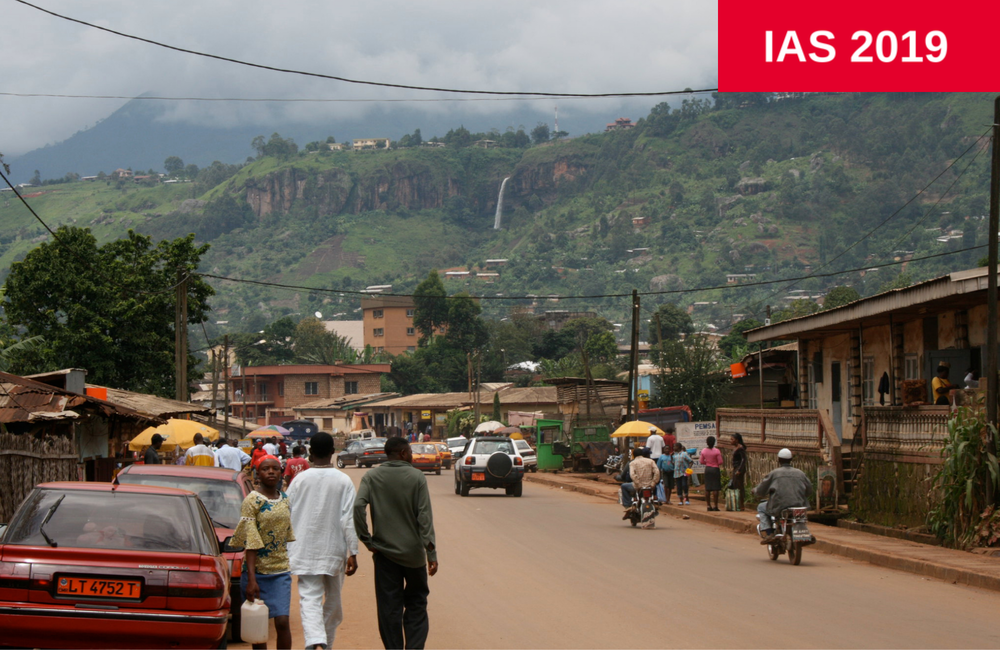
The presence of laws criminalising sex work is associated with a sevenfold increase in the odds of HIV infection among female sex workers in sub-Saharan Africa, according to research presented to the recent 10th International AIDS Society Conference on HIV Science (IAS 2019) in Mexico City. In settings where sex work was criminalised, female sex workers were also more likely to experience violence and stigma in social and healthcare settings. The research was conducted in ten countries with different approaches to the criminalisation of sex work, and the investigators conclude that criminalisation and stigma are helping drive the HIV epidemic among sex workers.
HIV incidence has slowed globally thanks to expanded access to antiretroviral therapy and new prevention technologies, especially pre-exposure prophylaxis (PrEP). However, the rate of new infections among sex workers in most settings across sub-Saharan Africa has at the very least remained stable and in some cases increased.
The legal environment is a key structural factor in HIV risk for sex workers. Carrie Lyons of Johns Hopkins University and her colleagues wished to determine the relationship between laws criminalising sex work, sex work-associated stigma and individual HIV risk.
They therefore analysed data from cross-sectional surveys of approximately 7000 female sex workers in ten countries in Western Africa (Burkino Faso, Senegal, Côte d’Ivoire, Guinea-Bissau, The Gambia), Central Africa (Cameroon) and Southern Africa (Lesotho, eSwatini, South Africa). These countries have differing laws on sex work: criminalised, partially legalised, or no specific mention of sex work in legal codes.
The study had two aims: to assess the relationship between sex work-related stigma and the prevalence of HIV infection among female sex workers according to the background legal context; and, to determine the association between sex work laws and HIV prevalence among female sex workers. The researchers considered written laws, but not how they are enforced.
All the participants were aged 18 years and older (median 27 years), were cisgender and derived at least half their income from sex work. Participants were tested for HIV. Demographic information and experiences of stigma were obtained using a questionnaire.
There were four measures of stigma related to sex work: social stigma (exclusion, gossip and rejection); healthcare stigma (fear of seeking services, avoiding seeking care, mistreatment, gossip, denial of services); community stigma (refusal by the police to provide protection, fear of being in public places, verbal harassment, blackmail); violence (physical and/or sexual).
Data were collected between 2011 and 2018.
Almost a third (29%) of participants were HIV positive. Just under half were in West Africa, 31% were in Central Africa and 20% in Southern Africa. Over half (56%) were living in settings where sex work is criminalised, 26% in settings with partial decriminalisation and 17% where the legality of sex work is not specified in legal codes.
There was a high prevalence of stigma across all four of the assessed categories. Over a quarter (27%) of participants reported social stigma, 20% reported stigma in healthcare settings, 67% had experienced community stigma and just under half (47%) reported physical and/or sexual violence.
Women experiencing stigma were significantly more likely to be living with HIV compared to women who did not report stigma (social stigma, OR = 1.64; healthcare stigma OR = 1.26; community stigma, OR = 1.45; violence, OR = 1.50).
In most cases, the association between stigma and HIV was stronger in countries criminalising sex work compared to those in which sex work was not mentioned in legal codes:
- Social, OR = 2.52 vs. 0.92
- Healthcare, OR = 2.08 vs. 1.29
- Community, OR = 1.56 vs. 1.65
- Violence, OR = 1.99 vs. 0.88
Compared to sex workers in countries with partial legalisation, those in settings with laws criminalising sex work had a more than sevenfold increase in the odds of infection with HIV (aOR = 7.59; 95% CI, 2.16-26.60), with sex workers in countries with no specific laws on selling sex having an over twofold increase in HIV risk (aOR = 2.49; 95% CI, 1.14-5.44). Even after adjustment to take account of the local HIV epidemic, laws criminalising sex work remained associated with an almost threefold increase in the odds of female sex workers having HIV (aOR = 2.82; 95% CI, 1.13-7.02).
The investigators therefore conclude that punitive and non-protective laws were associated with an increase in the risk of infection with HIV for female sex workers, and that stigma contributes to HIV risk across settings. Eliminating new HIV infections among sex workers will only be achieved if laws criminalising sex work and stigma are addressed.
Lyons C et al. Utilizing individual level data to characterize the relationship between HIV infection and the legal context of sex work across 10 countries in sub Saharan Africa. Tenth International AIDS Society Conference on HIV Science, Mexico City, abstract MOAD0103, 2019.
View this abstract on the conference website.
Update: Following the conference presentation, this research was published in a peer-reviewed journal:
Lyons C et al. The role of sex work laws and stigmas in increasing HIV risks among sex workers. Nature Communications, 11: 773, February 2020.
Full image credit: Bamenda waterfall. Image by rbairdpccam. Available at www.flickr.com/photos/shooteverypig/3739791736 under a Creative Commons licence CC BY-NC 2.0.
